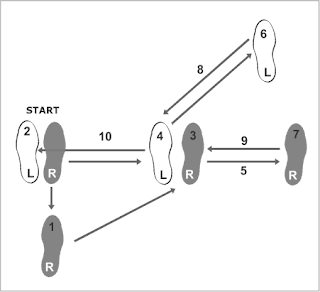History of Jazz Dance
World War I had ended and a social revolution was under way! Customs and values of previous generations were rejected. Life was to be lived and enjoyed to the fullest. This was the era of the "lost generation", and the "flapper" with her rolled stockings, short skirts, and straight up-and-down look. They scandalized their elders in the cabarets, night clubs, and speakeasies that replaced the ballrooms of pre-war days. Dancing became more informal - close embraces and frequent changes of partners were now socially acceptable.
Only one kind of music suited this generation - jazz, the vehicle for dancing the fox-trot, shimmy, rag, Charleston, black bottom, and various other steps of the period. Jazz originated at the close of the nineteenth century in the seamy dance halls and brothels of the South and Midwest where the word Jazz commonly referred to sexual intercourse. Southern blacks, delivered from slavery a few decades before, started playing European music with Afro modifications.
The birthplace of jazz has many origins: New Orleans, St. Louis, Memphis and Kansas City are just a few. But New Orleans was and still remains an important jazz center. The ethnic rainbow of people who gravitated to the bars and brothels were a major factor in the development of jazz. The city had been under Spanish and French rule prior to the Louisiana purchase. By 1900, it was a blend of Spanish, French, English, German, Italian, Slavic and countless blacks originally brought in as slaves.
The first jazz bands contained a "rhythm section" consisting of a string bass, drums, and a guitar or banjo, and a "melodic section" with one or two cornets, a trombone, a clarinet, and sometimes even a violin. Years later, jazz was taken over by large orchestras; a "society jazz band" contained fifteen or more musicians. Today, there is a renewed interest in the "big band" era, even though the music has very little to do with real jazz.
True jazz is characterized by certain essential features. The first is a tendency to stress the weak beats of the bar (2nd and 4th) in contrast to traditional music which stressed the first and third beats. The second feature is syncopation through an extensive repetition of short and strongly rhythmic phrases or "riffs". The third feature of jazz is swing (regular but subtle pulsation which animates 4/4 time). The swing must be present in every good jazz performance.




